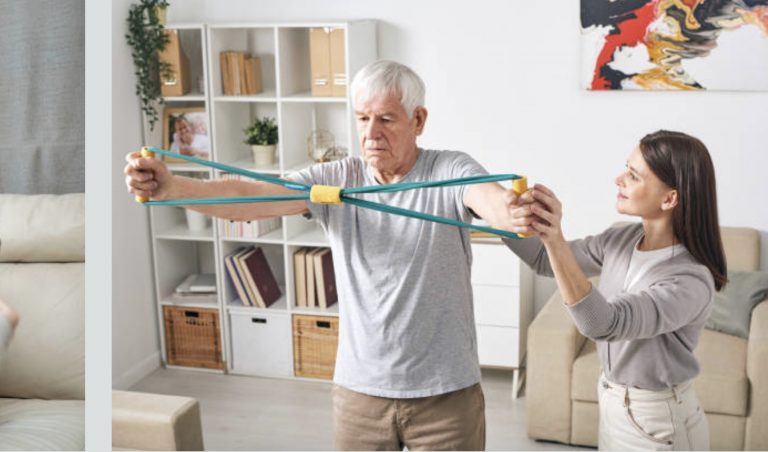Physical therapy can be very effective for degenerative joint disease treatment. However, for the best results – and to avoid aggravating the condition – it’s important to start out slowly and work with an experienced physical therapist who can design a tailored program to target your specific symptoms.
To address degenerative joint disease, physical therapy usually focuses on reducing stress on inflamed facet joints in the spine. Once the initial level of inflammation subsides, targeted stretches and exercises can be added with the goal of improving spinal stability, strength, and flexibility.
Physical Therapy Treatments for Degenerative Joint Disease
Some physical therapy techniques that are commonly used for degenerative joint disease treatment include:
- Manual Therapy – A physical therapist can use hands-on techniques, such as soft tissue massage, stretching, and joint mobilization, to relieve pain and improve spinal alignment, mobility, and range of motion.
- Therapeutic Exercise – Stretching and strengthening exercises that target the core, back, and abdominal muscles can help shift some of the disproportionate weight burden away from overloaded facet joints.
- Neuromuscular Reeducation (NMR) – Passive and active therapies can be used to improve posture, increase joint stability, and promote the use of proper body mechanics during rest and activity, all of which can enhance the health of the spine.
A physical therapist may also recommend the use of ultrasound therapy, electrical stimulation, hot and cold therapy, or traction to further relieve the pain and inflammation in your spine. After you complete a formal physical therapy program, you may be instructed on how to continue the benefits by exercising at home.
Can Physical Therapy Eliminate the Need for Surgery?
Many patients do very well with conservative degenerative joint disease treatment. Of those who elect to proceed with surgery, most do so only if they are still experiencing significant discomfort after several weeks or months of physical therapy and other nonsurgical treatments. Only you can decide what is best for you.
A significant percentage of patients are able to find relief from physical therapy and similar therapies. Before jumping right into surgery, it is important to try different options to ensure surgery is absolutely necessary.
BEST Health System
If you are interested in learning more about the different conditions that could benefit from physical therapy, contact our office today. Our team is dedicated to ensuring that all patients receive the most effective, least invasive treatment.
